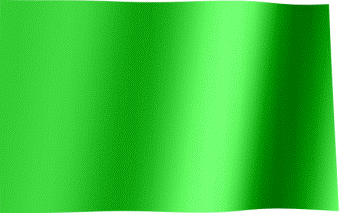Colors are an intrinsic part of our existence, influencing our emotions, perceptions, and even choices in ways we often overlook. While most people can name a plethora of colors, have you ever paused to ponder the colors that begin with the letter “K”? You might be surprised to learn that the world of “K” colors is not only captivating but also brimming with cultural significance and varied applications. In this article, we will delve into a few intriguing colors that start with “K,” exploring their origins, meanings, and the subtle layers of fascination they represent.
The color “Klein Blue” is one of the most notable shades beginning with the letter K. This vibrant blue hue was developed by the French artist Yves Klein in the 1950s. Klein was deeply interested in the intrinsic nature of color and sought to create a tone that transcended the ordinary spectrum. Klein Blue embodies a sense of freedom and spirituality, often evoking feelings of tranquility while simultaneously igniting creativity. Its appeal is not merely aesthetic but also philosophical — a vivid reminder of the power of artistic expression and innovation. Klein’s work and this color continue to inspire contemporary artists, demonstrating how a single hue can resonate deeply across generations.
Next on our palette is “Kombucha” — a notably unconventional color. Derived from the fermented drink that has surged in popularity, kombucha boasts an earthy, muted tone reminiscent of the beverage itself. This shade can range from a light honey to a deeper amber, reflecting the complexities of fermentation and the organic processes involved. The rise of kombucha not only speaks to current trends in health and wellness but also highlights how particular colors can symbolize broader movements. This color has become synonymous with a conscious lifestyle, representing a blend of tradition and modernity in our ever-evolving society.
Another mesmerizing addition to our “K” color list is “Khaki.” Originating from the Persian word for “dust,” khaki is historically notable in both military and fashion contexts. This earthy, muted tone is often associated with practicality and resilience, predominantly seen in uniforms worldwide. Despite its utilitarian roots, khaki has made a substantial impact in the fashion industry, symbolizing neutrality and versatility. The shift of khaki from the battlefield to everyday wardrobes signifies a fascinating transformation where function meets style, demonstrating how colors can transcend their origins to adopt new meanings.
Our exploration wouldn’t be complete without mentioning “Kyanite.” This striking mineral is known for its deep blue and green hues, often found in metamorphic rocks. Kyanite’s colors are not just visually appealing; they are also steeped in metaphysical beliefs. Many regard kyanite as a stone of alignment, prized for its purported abilities to clear blockages and promote harmony. In today’s world of wellness and spirituality, kyanite resonates with those seeking balance not only in terms of energy but also in the spectrum of colors they surround themselves with.
Moving forward, we cannot ignore the lesser-known “Kefalonia,” inspired by the Greek island renowned for its lush landscapes and cerulean waters. This color encapsulates the essence of Mediterranean beauty—a rich blend of greens and blues that reflects the tranquility of nature. Kefalonia’s hue invites nostalgia and wanderlust, encouraging us to reconnect with the world around us. It’s a reminder of how colors can evoke memories and dreams, transporting us to idyllic places with just a glimpse.
Then there’s “Kodak Gold,” a nostalgic reference to the iconic film used in photography. This color, characterized by its warm, rich tones, harkens back to the golden age of film. In recent years, with the resurgence of analog photography, Kodak Gold has become emblematic of a creative revival. Its hues evoke a sentimental connection to memories captured in film, serving as a bridge between past and present. Interestingly, despite the rapid evolution of technology, this color reminds us of the irreplaceable moments that shaped our identities.
In examining these diverse “K” colors, it’s evident that they serve more than just aesthetic purposes; they encapsulate stories, cultures, and movements. From the artistic depths of Klein Blue to the organic nature of Kombucha, each color resonates with our experiences and embodies various nuances of human emotion. These colors challenge us to reconsider the significance of our surroundings, urging us to find beauty and meaning in the subtle variations that often go unnoticed.
As we conclude our exploration, it’s invigorating to recognize how colors can be profound communicators of identity and sentiment. While the world often celebrates the primary hues of the spectrum, it is equally, if not more, fascinating to delve into the less conventional colors that reflect the complexities of our lives. Next time you encounter a color starting with “K,” take a moment to reflect on what it represents and the stories it might tell. After all, in the grand tapestry of existence, every color contributes its unique thread to our understanding of the world.
